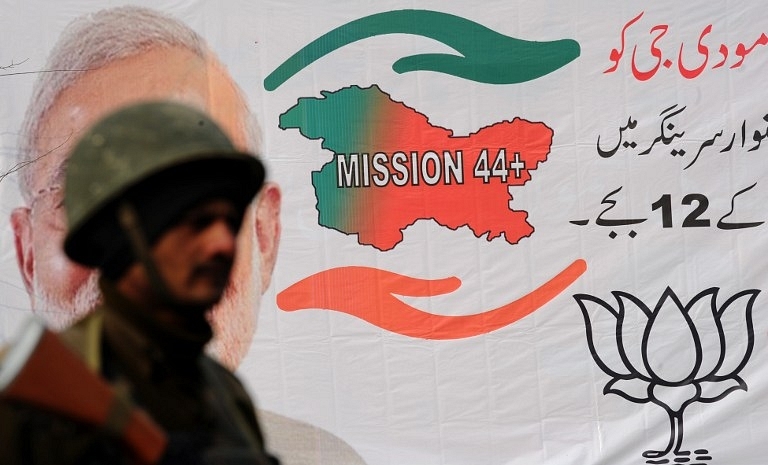Politics
J&K : A Secessionist-Nationalist Government?

The state has spoken. With a quantum leap for nationalistic Bharatiya Janata Party and a subdued, quasi separatist People’s Democratic Party — which has beaten the National Conference nevertheless — leading the pack, the coming together of two mutually divergent ideological forces is a given as far as formation of the next government in Jammu & Kashmir is concerned. It’s the people’s verdict for Prime Minister Narendra Modi’s “development” pitch with a caveat for his party that the agenda of revocation of Article 370 must wait, as it has fallen far short of its “Mission 44+”. The optimistic target pepped the cadre up, of course, which the BJP’s jump from past performances of 11 or 12 seats demonstrates. If the Kashmir Valley is yet to embrace its nationalism, the Jammu region is equally dismissive of the PDP that has clearly been stating “self rule” as its defining creed since 2008; it’s as satisfying from a democratic and patriotic point of view that former secessionist Sajjad Lone participated in the Assembly elections for a second time and, on this occasion, managed to win two seats. The most likely BJP-PDP coalition is bound to usher in an era of economic progress in the state. And it’s the leading regional party that has suddenly started singing the “development” raga; it’s a post-poll alliance with the BJP and not the Congress that Mehbooba Mufti is looking forward to. The tally of 50+ obtained by allying with the BJP meant smoother governance than that of less than 50 her party would get by allying with the Congress in the House of 87 seats, it seemed to the PDP spokespersons when the leads were pouring in. With the final result out, alliance with the Congress does not even bring in majority, and adding some independents would still keep the state government shaky
On its part, the Congress looked barely credible today, trying to hide its defeat by celebrating the BJP’s failure to score far less than its target, showing that it has drawn no lesson from Maharashtra where a shortfall from clear majority did not stop the party ruling at the Centre from forming a government in the state. The NC today sounded as amusing, trying to play down the PDP’s success while suppressing its humiliating loss determined by the anger of flood-ravaged voters, who couldn’t find Omar Abdullah’s government in office at their time of distress.
The BJP might have failed to engineer a sweep of the Jammu region due to the dilution of its core agenda, its close contest in more than 10 seats notwithstanding, but such risks are worth taking when the party’s primary aim was to sink its teeth into the state’s political affairs. At the Centre, a crucial calculation of the BJP must be taken into consideration in the same breath: Its slowly increasing footprint in the states — Jharkhand is all set to follow — bodes well for its strength in the Rajya Sabha subsequently, as important legislations are held up by the lack of majority in both the Houses of Parliament. These two factors considered together, this is the beginning of a new chapter in the state of Jammu & Kashmir, where education is in the doldrums, the youth are longing for gainful employment and every citizen fears for his life caught in the crosshair of firing between terrorists and security forces. With the PDP as ally, the task of winning hearts of the locals and unleashing infrastructure growth in the area at the same time is cut out for a ‘common minimum programmed’ BJP.
Support Swarajya's 50 Ground Reports Project & Sponsor A Story
Every general election Swarajya does a 50 ground reports project.
Aimed only at serious readers and those who appreciate the nuances of political undercurrents, the project provides a sense of India's electoral landscape. As you know, these reports are produced after considerable investment of travel, time and effort on the ground.
This time too we've kicked off the project in style and have covered over 30 constituencies already. If you're someone who appreciates such work and have enjoyed our coverage please consider sponsoring a ground report for just Rs 2999 to Rs 19,999 - it goes a long way in helping us produce more quality reportage.
You can also back this project by becoming a subscriber for as little as Rs 999 - so do click on this links and choose a plan that suits you and back us.
Click below to contribute.
Latest